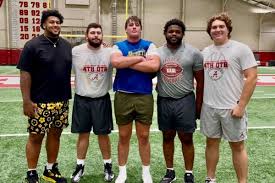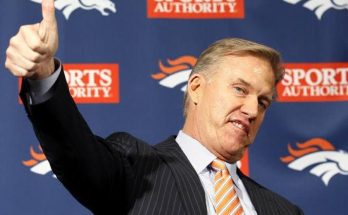The NFL Draft is rapidly approaching, and with every new mock draft that surfaces, fans and analysts alike scramble to make sense of what it might mean for their team’s future. For the Arizona Cardinals, a franchise in the middle of a critical rebuild, the latest projections are raising more than a few eyebrows—especially on the defensive side of the ball.
In a recent high-profile mock draft released earlier this week, the Cardinals were projected to completely bypass defense in the first round, instead selecting offensive players with both of their anticipated top-32 picks. For a team that ranked near the bottom of the league in several key defensive metrics last season, the idea of ignoring that side of the ball with such high draft capital has sparked passionate debate. Are the Cardinals signaling a philosophical shift, or is this merely a reflection of the talent pool available at the top of this year’s draft class?
Arizona currently holds the No. 4 overall pick and, thanks to a previous trade, an additional first-round pick that lands later in the round. Many expected the Cardinals to prioritize bolstering a defense that has struggled mightily in recent years, particularly against the run and in generating consistent pressure on opposing quarterbacks. The team finished near the bottom of the league in sacks, was gashed frequently by explosive plays, and lacked both identity and playmaking on the defensive side of the ball. However, the new mock draft suggests that Arizona may instead be looking to fortify its offense—potentially selecting a wide receiver and an offensive lineman with their two first-rounders.
It’s not entirely difficult to understand the rationale behind those selections. Quarterback Kyler Murray, despite missing significant time due to injury, remains the centerpiece of the franchise. Ensuring his success and keeping him upright have to be top priorities for general manager Monti Ossenfort and head coach Jonathan Gannon. A game-breaking wide receiver would immediately elevate the passing attack, and an elite offensive tackle could provide long-term stability at a position that’s been far too volatile for the team in recent seasons.
Still, to completely ignore the defense in the first round—especially when there are quality prospects expected to be available—feels like a bold, if not risky, decision. In the trenches, Arizona needs help. The team was among the worst in the NFL in pressure rate, and while young pass rusher BJ Ojulari showed flashes of potential last year, he can’t do it all alone. The cornerback room, too, is thin. Even though there’s optimism around players like Garrett Williams and Kei’Trel Clark, the secondary overall lacks the kind of depth and high-end talent needed to consistently hold up against elite offenses.
The Cardinals’ current roster construction only heightens the urgency for defensive reinforcements. Yes, building around Murray makes sense, but football remains a complementary game. You need to be able to get stops just as much as you need to score points. And right now, Arizona doesn’t have the personnel to consistently do the former. Last season, the Cardinals allowed more than 26 points per game, ranking among the bottom five teams in that category. Opponents were able to run at will and carve up the secondary with alarming ease. And while Gannon came to Arizona with a defensive pedigree—he was the defensive coordinator for a Philadelphia Eagles team that thrived on that side of the ball—he simply hasn’t had the tools to replicate that success in the desert.
It’s also worth noting that the 2025 draft class, while deep at quarterback and offensive tackle, features several defensive prospects who could be difference-makers. Names like Jared Verse, Dallas Turner, and Kool-Aid McKinstry have long been linked to Arizona in mock drafts, and with good reason. They are exactly the kind of high-upside defenders who could immediately elevate the Cardinals’ unit. Verse and Turner, in particular, are pass rushers capable of disrupting opposing offenses in a way Arizona desperately needs. McKinstry, a polished and versatile corner from Alabama, would be a welcome addition to a secondary in need of both talent and leadership.
So why the offensive focus in this latest mock draft?
One possible explanation is value. It’s not uncommon for teams to target premium offensive positions—namely quarterback, tackle, and wide receiver—early in the draft, where the talent drop-off is often more steep compared to the defensive side. This year’s class includes several receivers who could be future All-Pros. Marvin Harrison Jr., Malik Nabers, and Rome Odunze are all projected top-10 picks, and each would be a tremendous asset for a team looking to give Kyler Murray more help. There’s also the matter of positional longevity and market value. Drafting a potential Pro Bowl receiver or franchise tackle could be viewed as a safer, more impactful investment than a pass rusher or corner who may take longer to develop or come with more risk.
Additionally, Arizona’s front office may be betting on its ability to find value on defense in later rounds. This isn’t without precedent; teams often try to address one side of the ball early and then circle back to balance their roster later. If the Cardinals believe they can land a solid defensive lineman or a starting-caliber cornerback on Day 2 or 3, that could justify going offense-heavy early—especially if the offensive players on the board are simply too talented to pass up.
Another factor could be trade considerations. With multiple teams potentially looking to move up for a quarterback, the Cardinals may be in a position to trade down from the No. 4 pick and accumulate even more assets. In that scenario, they might still land a top offensive weapon while also picking up additional selections to use on defense later. It’s a strategic gamble, but one that could pay off if executed correctly.
Still, the optics of bypassing defense in Round 1 are hard to ignore. It sends a message—whether intentional or not—about where the team’s priorities lie. For a fan base that has watched its team get outclassed on defense year after year, that’s a tough pill to swallow. It also puts pressure on the coaching staff to maximize the talent they do have, and on Murray to take a major step forward with what would suddenly become a much more potent offense.
The Cardinals are in a unique position. They have a franchise quarterback, ample draft capital, and a clean slate to rebuild in a way that reflects the new regime’s vision. But how they choose to spend their picks—especially in the first round—will go a long way in determining whether that vision becomes reality or remains an unfulfilled promise. Defense may not win championships on its own in today’s NFL, but ignoring it altogether in the first round feels like a dangerous game for a team that still has so many holes to fill.
Of course, mock drafts are just that—mock drafts. They are not gospel. But they do serve as a window into how analysts and insiders are interpreting team needs, draft trends, and league-wide philosophies. If nothing else, this latest projection underscores the wide range of directions Arizona could go, and how difficult it is to predict what Ossenfort and company are truly thinking. The one certainty is that this draft will be pivotal for the franchise’s future. The decisions made in late April could define the Cardinals for years to come.
In a league where balance is often the key to success, the Cardinals must be careful not to overcorrect in one direction. Murray deserves help, no doubt. But so does a defense that has been left to fend for itself for far too long. If Arizona is serious about contending in the near future, it will take more than just fireworks on offense. It will require a defense that can hold its own, make plays, and tilt the field in the team’s favor. Whether the front office recognizes that—or believes they can build that unit without a first-round investment—remains to be seen. But one thing is clear: the spotlight will be firmly on the Cardinals come draft night, and every pick they make will be scrutinized through the lens of both opportunity and consequence.



